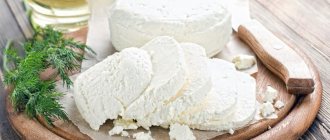Milk can be called a unique food product because it has no analogues. Dairy products contain a set of vitamins and microelements necessary for a developing body. Therefore, every person becomes acquainted with it in childhood. For many years, debate has not subsided whether this product is useful for an adult, or can only a child’s body absorb it well? But until the exact answer is found, people of all ages enjoy drinking this drink and feel great about it. Today we will talk about how to store milk and give several original ways to preserve this product.
Kinds
Today you can purchase almost any of the existing dairy products. The milk itself is presented in a large assortment. On supermarket shelves you can see not only traditional cow meat, but also goat and sheep meat. This product is also distinguished by the type of processing.
- Sterilized is a product that is heated above +100°C and boiled for several minutes. Many people do this treatment at home using regular boiling. This treatment destroys all beneficial and harmful bacteria, including lactic acid bacteria. Such a drink no longer contains useful elements, but does not change its taste, and remains suitable for consumption for quite a long time.
- Pasteurized - with this treatment the product is heated to + 60°C once. Milk of this treatment should be stored at a temperature of +3°C - +5°C for 2 - 3 days. After this time, the product will begin to sour.
- Ultra-pasteurized – a product quickly heated to +150°C and cooled just as quickly. The storage conditions for milk after such treatment are similar to those for pasteurized milk, but it will be stored longer, since all the bacteria that lead to sour milk when heated die. It must be said that the taste and beneficial qualities in such products are preserved almost completely.
GOSTs define the following types of milk:
- Whole. A product that has been strained but cannot be changed in fat content. It fully preserves the natural ratio of fats, proteins, and carbohydrates.
- Low fat. Cream is separated from such milk using a separation process. It has a taste similar to whole, but the content of fats, proteins and carbohydrates in it is reduced by 2 times. This product is used by people who watch their weight.
- Normalized. First, the products are completely degreased and the cream is separated. Then, by adding cream to the low-fat product, the required fat content is achieved. The composition is normalized so that the fat content is not too high. Cottage cheese, sour cream and other products with the required fat content are made from this milk.
- Refurbished. It is made from a powder product or milk concentrate with the addition of water.
What to do with missing milk?
Slightly sour homemade and pasteurized milk can be used in cooking, folk medicine and cosmetology .
A sterilized drink is not suitable for these purposes, since it is not capable of turning sour due to the destruction of all beneficial microflora. This product acquires a bitter taste and a viscous consistency - which means it’s time to throw it away.
Fermented milk can be used in homemade recipes. For example:
- pancakes;
- pancakes;
- omelette;
- cottage cheese;
- cheese;
- barbecue marinade;
- cake;
- pie;
- cookie;
- refreshing drink;
- soup.
In cosmetology, sour milk is used as a toning and whitening mask.
Properly fermented milk is valuable for the body. It is useful for those diagnosed with the following conditions:
- rickets;
- lack of calcium;
- constipation;
- atherosclerosis;
- low stomach acidity;
- enzyme deficiency.
Sour milk will also be useful for expectant mothers.
Types of packaging
Products sold in plastic bags or cardboard bags are most often pasteurized. Pasteurized milk can be stored for no more than 3 to 5 days.
Products that have undergone ultra-pasteurization and sterilization are bottled under completely sterile conditions. After such treatment, milk is stored only in special packaging made using Tetra-Pak technology. They provide storage conditions under which the product retains all its qualities for up to six months. Ultra-pasteurized products should not be purchased in containers made of polyethylene and cardboard.
Milk storage
The shelf life depends on:
- the type of processing to which the products were subjected;
- storage locations;
- packaging material.
If we talk about fresh homemade milk, it can be stored in a place with a low temperature for up to 48 hours if it is in a clean container with a lid. And after boiling, the shelf life of milk will be extended to 3 days on the refrigerator shelf.
Fresh and boiled varieties at room temperature will remain usable for 10 and 18 hours, respectively.
The longest storage is provided by Tetra Pak packaging. They keep the product fresh for up to six months.
Opened packages have a shorter shelf life.
- Pasteurized milk has a maximum shelf life of up to 2 days.
- Sterilized – up to 4 days.
- Ultra-pasteurized product has a shelf life specified by the manufacturer on the packaging.
- Fermented milk products, as a rule, remain usable for up to 3 days.
In a refrigerator
The shelf life of milk is regulated by GOST and SanPiN and depends on several factors:
- Type of packaging;
- Methods of primary processing in production;
- Ambient air humidity;
- Temperature;
- Conditions for transporting food products.
The recommended air humidity is from 85 to 90 percent, temperature is from 0 to +10 degrees (determined by the type of milk).
Many dairy products are quickly sold due to the high probability of proliferation of pathogenic microorganisms. Manufacturers always indicate the expiration date on the drink packaging.
Homemade (raw, fresh)
Farm dairy products are considered much healthier than their factory counterparts due to the absence of preservatives, thickeners and stabilizers in the composition. Unfortunately, natural drinks do not last long even in the refrigerator - only 2 days. It is recommended to pour the milk into a clean glass vessel. Then close tightly with a plastic lid.
Conditions and storage time for raw milk:
- 8-10 degrees - stored for up to 12 hours.
- 6-8 degrees - no more than 18 hours.
- 4-6 degrees - no more than 24 hours.
- 3-4 degrees - no more than 36 hours.
- 1-2 degrees - no more than 48 hours.
Pasteurized
Pasteurized milk is most often found on supermarket shelves. This type of processing involves prolonged heating of the liquid to a temperature of 60 degrees. As a result of heat treatment, pathogenic microorganisms die. Moreover, beneficial bacteria are completely preserved.
Pasteurization helps increase shelf life up to 3 weeks. The main condition is the tightness of the packaging. Once the package is opened, the shelf life is immediately reduced to 48 hours. The product should be stored in the refrigerator compartment on shelf 3.
UHT
This type of milk undergoes heat treatment with short heating up to 150 degrees. Then the drink is cooled to +5 degrees. The shelf life of the product is very long and is up to 6 months.
The exact duration of storage depends on the presence of stabilizers, thickeners and preservatives in the composition. You have to pay for these features with a decrease in the amount of useful substances, since high temperatures destroy beneficial bacteria.
UHT milk can be stored on the refrigerator door. It is not advisable to place the packaging in a sunny place.
Boiled
Once boiled, cow's milk can be stored for 1 week. The main thing is to sterilize the drinkware in advance. Be sure to boil milk that you buy from unverified sellers. Remember that the benefits of a boiled drink decrease, since prolonged heat treatment destroys proteins and vitamins.
Some substances begin to be poorly absorbed. However, pathogenic microorganisms also disappear.
Ghee
Baked milk is considered a tasty delicacy that goes well with various baked goods. Preparing the drink involves boiling and simmering for a long time. The product remains fresh for up to 10 days in the refrigerator.
Goat
This type of milk is much less likely to cause allergic skin reactions, so it is very popular among people with various allergic manifestations. The unique composition brings considerable benefits to the body. Goat milk is rich in vitamins and various microelements. Fresh dairy products without prior heat treatment are stored in the refrigerator for up to 3 days. A prerequisite is the use of a hermetically sealed and sterile container. Factory-made goat milk can be stored for 1 week. The liquid cannot be boiled again.
Lactose-free
Because some people are lactose intolerant, manufacturers have begun to produce lactose-free milk. For this purpose, special hydrolysis technologies are used. The dairy product is good for people with diabetes. The hermetically packaged drink lasts in the refrigerator for no more than 1 month. After opening the package, the shelf life is reduced to 4 days.
Concentrated
Many stores sell concentrated milk, which is obtained by sterilizing raw milk and subsequent dehydration. The product is used for making baked goods, soups and various sauces. Well suited for tourists because it does not spoil for a long time. Shelf life – up to 3 years, depending on packaging. It is important to observe temperature conditions – from +10 to +20 degrees. As a rule, the drink is sold in cans.
Condensed
Condensed milk is a popular delicacy that is consumed along with various baked goods. In addition, the product is added to confectionery products. Typically supplied in cans or plastic bags. Shelf life – up to 3 years.
Dry
Powdered milk is a white powder that easily dissolves in drinking water. Dairy raw materials are used to manufacture the product. It undergoes preliminary thickening and drying. Powdered milk is indispensable for preparing various dishes, including baby food. The shelf life of a low-fat product is up to 3 years, a whole product is up to 10 months. The diluted solution is stored for up to 72 hours.
Vegetable
Despite its name, the product does not contain real milk. However, its properties are very similar to the popular white drink. For preparation, vegetable raw materials are used - almonds, coconuts, sesame seeds, pumpkin seeds and so on. There is milk made from soy and rice grains. After opening the package, the product is placed in the refrigerator. Shelf life – up to 3 days.
Chest
The AKEV community has determined that fresh breast milk remains safe for up to 8 days when stored properly. With each day of storage, useful substances - antioxidants and vitamins - disappear.
It is recommended to pour the liquid into a glass container as it can absorb surrounding odors. You need to write the date of pumping on the surface of the bottle.
Storage conditions for fresh milk
People who prefer homemade or farm products often do not know how to store fresh milk. According to all the rules, this product must be pasteurized, otherwise it will spoil very quickly. Milk begins to sour after just 2 hours if it is at room temperature, and will only be suitable for processing into cottage cheese or kefir. But for this you need to have special starters, relevant knowledge and experience.
The shelf life of raw milk is given below:
- +8°С -+10°С – shelf life up to 12 hours;
- +6°С -+8°С – up to 18 hours;
- +4°С -+6°С – up to 1 day;
- +3°С -+4°С – up to 36 hours;
- +1°С -+2°С – up to 2 days.
Goat meat also doesn't last long. It is boiled, poured into a glass container, sealed tightly and placed in the refrigerator. Best on the top shelf. In this way, the shelf life of goat milk can be extended by 3 days.
Shelf life of milk depending on packaging
Plastic bag
It is a soft plastic package, coated with a dark layer on the inside. Low cost, usually used for pasteurized drinks. The contents of the package are reliably protected from sunlight. It is characterized by high strength. The longest shelf life is 3 weeks.
Plastic bottle
Many milk producers use plastic bottles to package finished products. The average shelf life is 3 weeks due to slight sealing. The sun's rays easily penetrate through such containers, so it is better to choose a dark place for storage.
Can
Extends shelf life to several years.
Tetrapack
It is a cardboard box coated with an aluminum layer on the inside. Allows you to store contents for several months.
Glass
Typically, glass containers were used during the Soviet Union. Today, few manufacturers bottle milk in glass bottles. The container is very fragile and easily transmits light. This causes rapid destruction of beneficial substances. And the shelf life is reduced to 36 hours. The only advantage is the preservation of all the taste qualities of dairy products.
Where to store milk
Milk can only be stored in a cool place for several days. This product is considered perishable and cannot remain fresh for a long time even in the refrigerator. But to maximize shelf life, you should keep the product in a glass container, tightly closed. Sheep and goat milk should also be kept in glass containers.
You cannot use plastic containers, even if they are food-grade. In such containers, products will deteriorate much faster.
Useful tips
In order not to harm the body with a low-quality product, you need to follow simple rules:
Always check the expiration date of milk when choosing.- Buy as much milk as you need in a few days.
- Always buy fresh product and read the label carefully.
- Purchase farm milk from reputable sellers with appropriate documentation.
- If you like to freeze milk, then you need to store it separately from other products.
- It's best to mark the date and time you froze your milk on the carton to ensure you use the freshest one.
- Do not use milk that is moldy, has a bitter taste or has a foul odor.
How long can frozen milk be stored?
Following certain rules, milk is frozen. Then it is stored for much longer.
Before freezing, a small portion of the product is poured out of the container so that there is room for expansion when freezing. To defrost, you need to keep it on the refrigerator shelf for 1 - 2 days, after which the milk will be ready for consumption.
When frozen, milk can be stored for up to 4 months, while maintaining its quality and nutritional value.
If you like to add cream to your coffee, try freezing the milk in ice cube trays. This is very convenient if the cream is used exclusively for these purposes.
- Take ice cube trays, wash them well and pour boiling water over them.
- Pour dairy products into them.
- Place in the freezer for a few hours or overnight.
- Place frozen cubes in a separate bag so they take up less space.
How to prolong the freshness of milk
Boiling
Raw homemade milk is the most defenseless.
- The unprocessed product is stored for up to 24 hours at a temperature not lower than 1 °C and not higher than 20 °C.
- At room temperature this period is reduced to 10 hours.
It is advisable to sterilize raw milk to get rid of microorganisms and increase its shelf life. And you must do this if you bought bottled milk for an occasion at the market.
For proper boiling:
- Choose a pan. Glass, aluminum or steel are suitable.
- Checking for freshness. Pour the milk into a tablespoon and bring it to the flame. If it is not fresh, it will curdle immediately.
- We checked everything and made sure the product was fresh. Pour milk into the pan, put it on low heat and keep an eye on it - it will try to “escape”.
- Bring to a boil and turn off. Every minute kills vitamins and “curdles” calcium. It is this that remains like scum at the bottom.
- Then let it cool and pour into a container that has been prepared for storage. The container must be disinfected by dousing it with boiling water.
After boiling, milk will last at room temperature for a day, in the refrigerator - up to 7 days.
To prevent milk from running away, place an inverted saucer or a special milk “guard” - a ribbed circle with a spout - on the bottom of the saucepan.
Freezing
Some people ask: is it possible to freeze milk? Can. This increases shelf life, but loses enzymes and some vitamins. Therefore, it is better to drink what you have just bought, rather than defrosted.
The freezing process is simple:
- Pour the milk into the container you have chosen for freezing. Do not fill to the brim because the product will expand as it freezes.
- It is better to start the process with quick freezing at -22 °C.
That's all. It is better to defrost milk on the bottom shelf of the refrigerator; by evening it will be ready for use. But keep in mind that defrosted food cannot be re-frozen. So all the benefits and taste will be lost.
Frozen milk can be stored until defrosted. But we do not recommend keeping it in this form for more than 2 months.
Note to the hostess
It should be noted that after defrosting, organoleptically (taste, color, consistency) milk no longer resembles the original product.
Boiling
After boiling, milk can be stored for 3 to 4 days. And if you lower the temperature to 0 degrees - up to 7 days.
Raw, unheated milk contains many different bacteria that are killed when boiled. Therefore, it is recommended to give only processed food to children.
It is imperative to boil products purchased from strangers, even if they verbally guarantee its quality. There are cases where people, drinking raw milk, became infected with such a dangerous disease as brucellosis. This infection is transmitted from a sick animal and affects the organs and central nervous system of humans. Boiling completely kills pathogenic microorganisms, and such a product will be safe to consume.
But there is also a downside to this. Products that have been exposed to high temperatures are no longer as healthy as fresh ones. During the boiling process, protein remains in large quantities on the walls of the container. Changes concern calcium and phosphorus - it becomes more difficult for the body to absorb them. With prolonged heating above +100°C, vitamins C and D decompose, and a significant part of the protein is also lost.
Ghee
Baked milk is almost ordinary milk, having a high concentration. It contains fats and calcium in large quantities. When heating, the milk should not boil. It is kept at +85°C - +90°C for a long time, which is why vitamins are preserved in it.
Baked milk should be stored exclusively in the refrigerator, in a tightly sealed container at a temperature not exceeding +8°C. Then it will remain fresh for about a week.
Basic rules and nuances of storage
In order for the milk to be of high quality, it is necessary to follow certain hygiene rules when milking a cow. Souring occurs due to the ingress of bacteria from the air, animal hair, dishes, hands, and clothing. To avoid this it is necessary (Figure 5):
- Keep the cow clean;
- Before milking, ventilate the room, wash and dry the udder;
- Milk the cow in a clean robe, tuck hair under a scarf, wash hands with soap and dry before the procedure with a clean towel;
- Before milking, tie the cow's tail to the hind leg;
- It is better to express the first streams into a separate container, as it may contain bacteria;
- The milking bucket should always be kept clean and washed after each use;
- Milk the cow completely;
- After milking, wipe the teats and lubricate them with Vaseline.
Figure 5. Basic hygiene rules for milking cows
After milking is completed, the milk must be cooled for further storage.
Coconut
To get a natural drink, coconut pulp is crushed and then water is added to it. Its smell and taste are neutral, but coconut milk contains a large amount of useful substances. It can be purchased in stores in cans or paper packages. In a closed container it will keep for a long time, but after opening the package it should be consumed within 1 day.
Why does pasteurized milk last longer?
The extended shelf life of pasteurized milk is due to several factors. First of all, lactic acid bacteria, which are responsible for souring the product, die during processing. These microorganisms are used to produce fermented milk products. They prevent storage for too long.
Modern production ensures sterility at all stages of milk production. At the enterprises, the bottling of drinks takes place under ideal conditions. Sterilized milk lasts much longer. The exact shelf life is determined by the quality of the raw materials. UHT milk stays fresh for 45 days. Detailed conditions are indicated on the label.
Once the package is opened, pasteurized milk cannot stay fresh for too long. It is recommended to use the product within several days.











